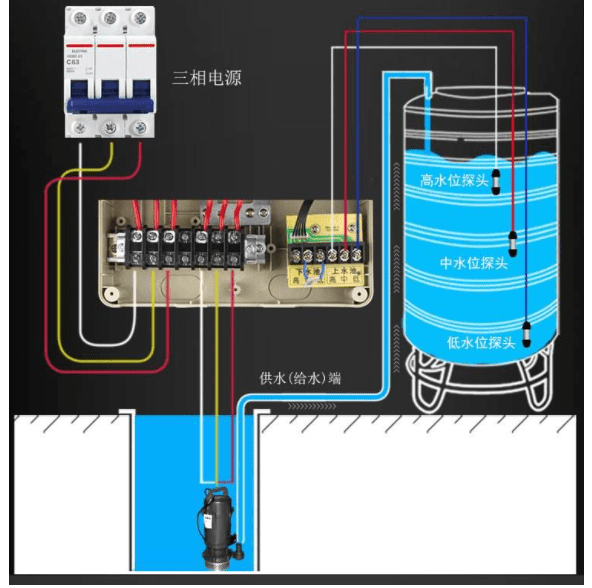Radar level sensors have a very wide range of applications. Almost all media can be measured. This is something other types of meters can only look up to.
It can measure not only spherical tanks and horizontal tanks, but also the liquid level measurement of cylindrical tanks, cylindrical cone tanks, etc.
In terms of tank function, the liquid level in storage tanks, buffer tanks, microwave tubes, and bypass pipes can be measured.
As far as the measured medium is concerned, liquid, particle, slurry, etc. can be measured.
- Steel industry
Production processes:
Coal coking: coal preparation bunker, coke bunker, gas tank, coal tar and crude benzene tank
Sintering plant: sintered material mixing bin, cold return ore, pelletizing bin
Ironmaking plant: ironmaking intermediate warehouse, blast furnace material level, etc.
Working characteristics:
Solid material measurement, strong dust, low dielectric constant, long range.
Volatile crystallization of tar and crude benzene;
High temperature and dust adhesion of blast furnace material level;
Selection application:
Solid measurement is mainly based on high-frequency pulse radar level meter.
Guided wave radar level meter can be used for crude benzene and coal tar.
- Coal industry
Production link: raw coal bunker, pulverized coal bunker, coal gangue storage level, coal washing pool.
Working condition characteristics: typical solid material measurement, strong dust, low dielectric constant. Long range.
Selection and application: high-frequency pulse radar level meter is mainly used.
- Cement industry
Production link: raw material warehouse, raw material homogenization warehouse, clinker warehouse, finished product warehouse, fly ash warehouse, raw coal warehouse, gypsum warehouse, cement slag warehouse
Working condition characteristics: Typical solid material measurement, strong dust, low dielectric constant, long range.
Selection application: High-frequency pulse radar level meter is mainly used.
- Power industry thermal power, hydropower, biological power generation
Production processes:
(thermal power) raw coal and pulverized coal silo, circulating water pool, low and high water level, limestone powder silo, ash hopper material level, ash silo, slag silo, desulfurization tower liquid level
Working characteristics:
Solid material measurement, strong dust, low dielectric constant, long range.
Low water level, high temperature and high pressure;
Desulfurization tower liquid level foam, water vapor, crystallization, spray interference, side loading
Selection application:
The measurement of solid materials is mainly based on high-frequency pulse radar level meters.
High and low water level application of guided wave radar;
The low frequency radar level gauge is commonly used in the desulfurization tower liquid level;
- Non-ferrous metallurgy industry – aluminum, nickel, zinc, and titanium industries
Production processes:
(Aluminum production) slurry tank, dissolution tank, flash tank, post-dissolution tank, flocculation tank, settling tank, decomposition tank, alumina powder silo.
Working characteristics:
Various chemical reaction environments have high temperature, strong water vapor, stirring or corrosion factors
Selection application:
For the influence of high temperature water vapor, refer to factors such as corrosion, measuring range, stirring, and hanging material;
Choose between guided wave radar or low frequency radar level gauge.
High-frequency radar level gauges are still preferred for solids measurements.
- Water conservancy industry
Applications: Hydrological monitoring, flood control alarm, farmland irrigation
Characteristics of working conditions: The signal transmission is far away, the power supply voltage is low, and the installation position is affected by the embankment and dam. The radar wave with small beam angle is preferred.
Selection application: choose high-frequency radar level gauge with MODBUS protocol
- Food and pharmaceutical industry
Production processes:
Edible oil tank, soybean meal storage tank
Working characteristics:
Simple tank environment, or with precision requirements, antenna hygiene requirements in the pharmaceutical and food industries
Selection application:
The high-frequency radar level meter is preferred for the measurement environment with high precision;
If there are hygienic requirements, an antenna with a sealed material that meets hygienic conditions should be selected;
- Industrial petrochemical, coal chemical
Production processes:
Petrochemical: crude oil depot, gasoline tank, diesel tank, natural gas tank, etc.
Coal coke chemical industry: refer to the coal industry
Calcium carbide chemical industry: coal bunker, calcium carbide bunker, etc.
Working characteristics:
Solid material measurement, strong dust, low dielectric constant, long range.
The measurement environment of various oil depots is simple and may have accuracy requirements
There is pressure in the natural gas spherical tank, and the dielectric constant is small
There is oscillating interference echo in gas tank measurement
Various chemical reactor conditions are different
Selection application:
The measurement of solid materials is mainly based on high-frequency pulse radar level meters.
For various oil depots with precision requirements, high-frequency radar is preferred for spherical tanks;
Gas cabinets that are prone to oscillating interference signals also have limited selection of high-frequency radars;
The chemical reactor is selected according to the actual conditions and parameters;
- Environmental protection and water treatment industry
Processing link:
Water collecting well, coarse grid, fine grid, biochemical reaction pool, mud flushing pool, sludge pool, well dissolving medicine pool.
Working characteristics:
Except for ultra-long-range and narrow spaces such as water collection wells, other environments are relatively simple.
Selection application:
The water collecting well can choose guided wave radar or high-frequency radar level gauge according to the range requirements. Generally, ultrasonic level gauges are more commonly used in simple environments.
- Semiconductor industry
Production link: silicon micropowder warehouse
Working condition characteristics: very low dielectric constant, strong dust
Selection application: high frequency radar level meter
